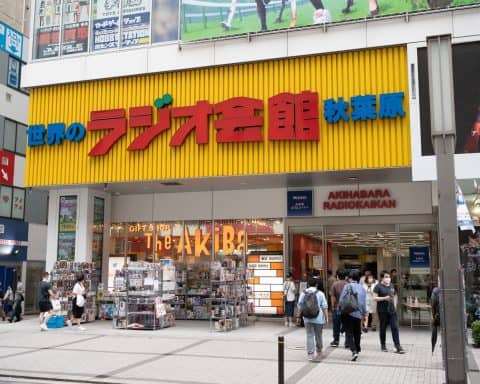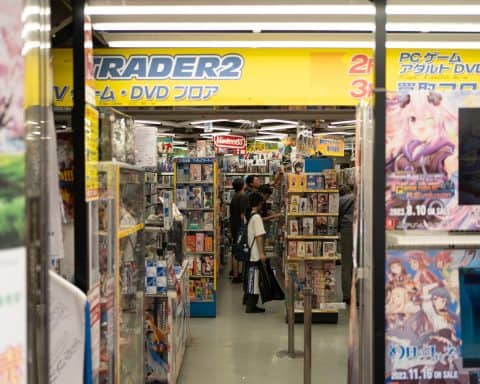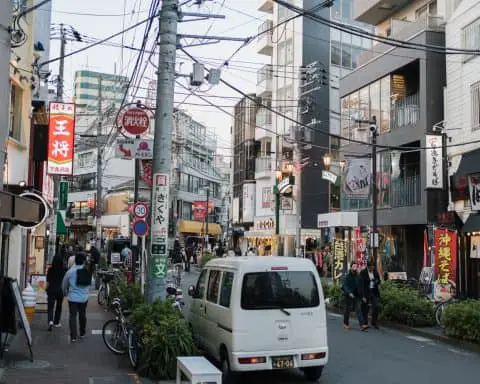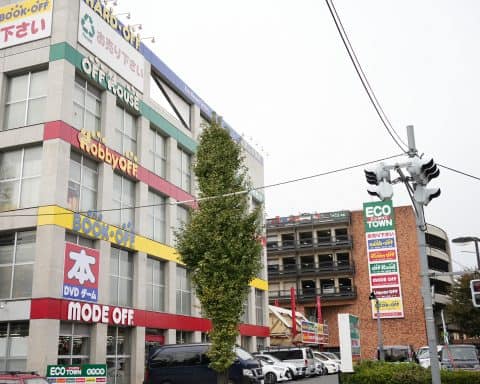In February of 2023, I fulfilled a lifelong dream of Skiing in Japan. I was lucky enough to ski in Niseko with its epically deep powder, and damn was it good. Of course, before setting foot on those legendary slopes, I had to actually figure out a way of getting from Tokyo to Niseko, and the bus just wasn’t going to cut it for us!
Why we took the train from Sapporo to Niseko
The usual route for people figuring out how to get from Sapporo to Niskeo is to fly into somewhere like Haneda or Narita (from their home country), and then take a plane to Sapporo airport. After that, they’ll normally have pre-booked a bus that goes directly to Niseko.
Narita-Sapporo-Niseko
Is this a good way to get to the resort? Sure, but after a terrible bus journey earlier in the year, we weren’t leaving anything to chance.
Plus, we thought we’d make a few days of it and decided to explore Sapporo for a couple of days first. That meant taking another 30-minute bus from the airport to Sapporo, so the direct transfer from the airport was out.
Narita-Sapporo-Otaru-Kutchan-Niseko
As you can see, our way is a little more complicated but definitely worth considering. Japanese trains are really easy to navigate so even though we felt like we were in the middle of nowhere at times, there was always decent enough infrastructure to get to our destination.
Who should take the train from Sapporo to Niseko
The type of people who should take the train from Sapporo to Niseko will fall into two categories:
1. You’re visiting Sapporo – I understand that the majority of people going for a ski holiday in Niseko will only be doing that (due to time constraints or money), but if you do happen to have a spare day or two then I’d highly recommend checking out Sapporo.
Be warned, it’s FREEZING in Winter. Even colder than Niseko!
This is a photo of me genuinely trying to smile after being caught in a blizzard and seeking refuge in a random 7-Eleven. Make sure to wrap up!

2. You love an adventure
Getting from Sapporo Station to Kutchan Station* usually takes two or more trains, means waiting in the cold, and potentially standing for over an hour. But it also means riding around the very top of Japan and seeing views that very few tourists are likely to see.
Of course, if your hotel offers a pickup service or anything like that, go to the station they recommend (or just take a bus/coach if you’re somewhere in the middle of nowhere. As much as I loved the train option, I understand it won’t work for everyone!
*It’s actually a lot easier to get into central Niseko from Kutchan Station (not Niseko station), so that’s what we decided to do and what this guide will be about. You can usually just stay on the same train as Niseko Station is the next stop, but always check before.
The route from Sapporo to Niseko by train (via Kutchan)
Here’s the youtube video Nadia made from Sapporo to Niseko if you’d prefer to read about it rather than watch it!
Sapporo Station
Straight off the bat, this is going to be fairly photo-heavy compared to the usual posts I do. I think a lot of these photos say a lot more than I could anyway!
As you can see, it’s flipping cold in Sapporo station. And as you might have guessed, all of this weather doesn’t exactly bode well for train departures. I think this was the only time since I’ve lived in Japan that a train has been delayed for more than 40 minutes.
So please make sure you wrap up because the platform is completely at the mercy of the elements even if it doesn’t look like it is. And to make matters worse, the train that we want to get on is fairly infrequent. I’m talking once every hour at best, often longer.
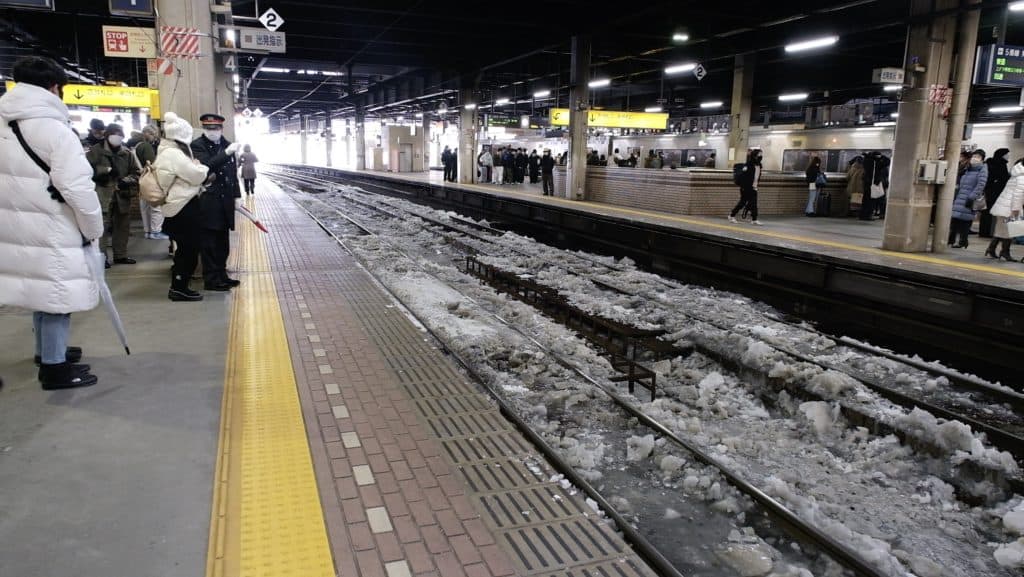

To be honest, if I’m comparing the UK vs Japan (and probably the US to Japan from what I’ve heard), Japan still performs incredibly well despite the track conditions. In Sapporo, it would be sunny one minute and then a blizzard the next, and all things considered, the public transport ran pretty well.
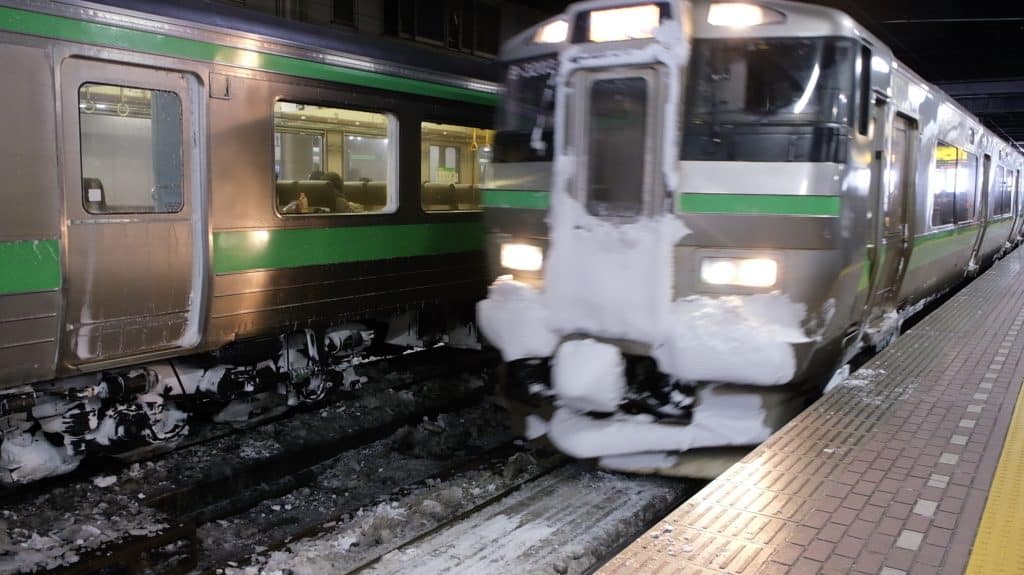
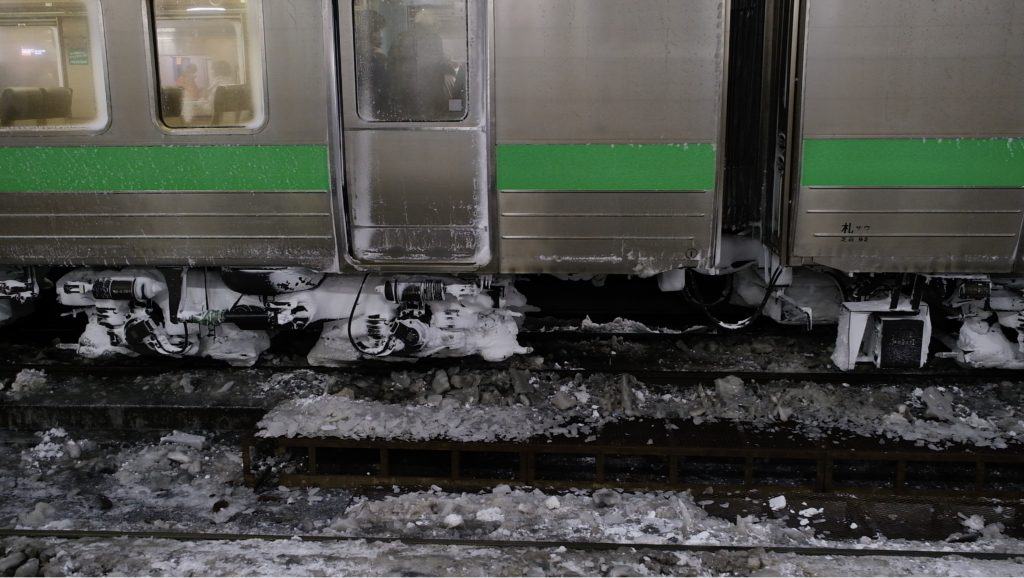
When our train finally arrived, it looked as though it had just come back from a week-long exploration of Antarctica (kinda bummed out I didn’t go with it…). I’ve never seen trains look like this and still manage to operate, but apparently, they can!
Unfortunately, we decided to move down the platform after thinking we’d read the floor markings wrong (we thought we were standing by the green car section (first class)), but it turns out we weren’t. So despite getting to Sapporo station over 30 minutes before the train left and being first in the queue, we ended up being last and had to stand up for over an hour (barely making it on the train) due to the mass of people and the delay.
But hey, it’s an adventure, and we made it!
Sapporo – Otaru

For the first 30 minutes or so, the scenery was a mix of mountains, towns, and a hell of a lot of snow. While we were unfortunately standing up, I suppose we could at least spend that time admiring the view out the window.
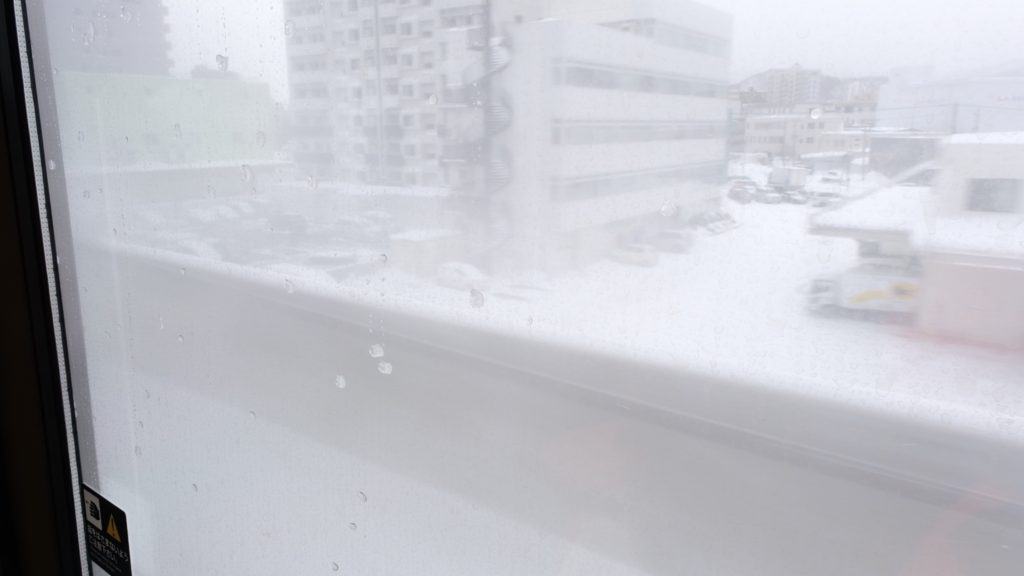

After those 30 minutes, you’ll start to get your first glimpses of the ocean, and the northernmost parts of Hokkaido. It’s a pretty strange feeling to realize you’re right at the very top of a country, and with the weather like it was on the day we got the train, it really looked like it was the end of the world.

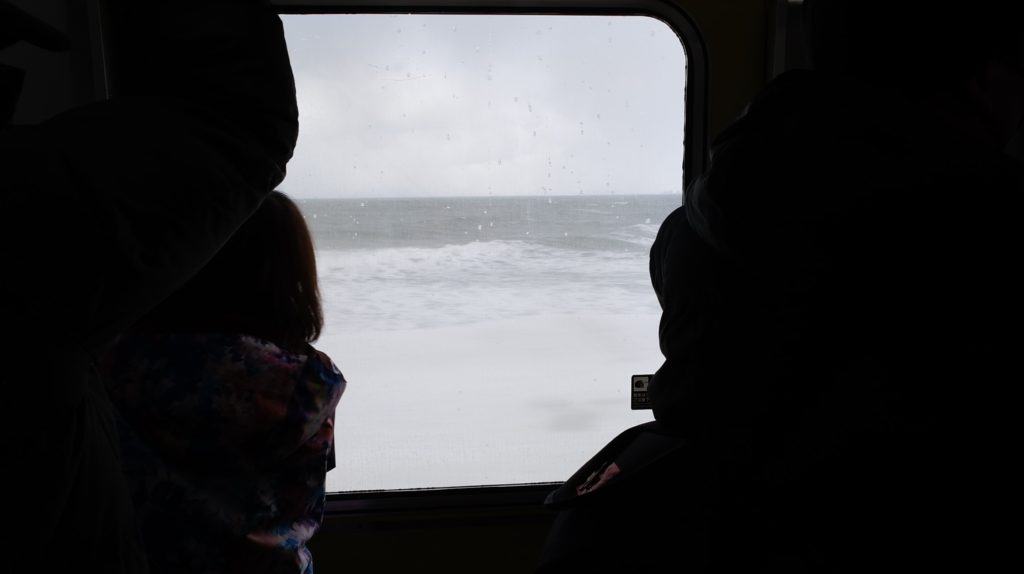
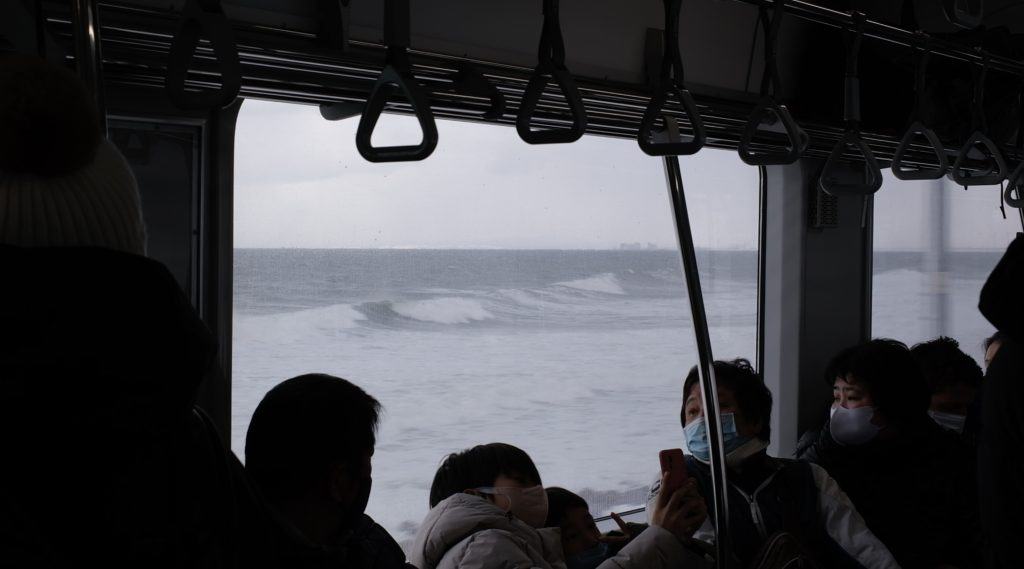
Depending on the train you get, it will probably take you around an hour to get from Sapporo to Otaru by train. It’s obviously going to be a more pleasant trip if you can get a seat, but it’s honestly not too bad if you can’t.
I think most people tend to send their luggage via Ta-Q-bin service from the airport to their hotel (or hotel to hotel) if they’ve got a couple of days before they start skiing. It’s this kind of hands-free travel mindset that most people in Japan have that makes traveling on the trains and around the stations such a joy.
Ta-Q-Bin article to follow shortly!

Otaru Station
Depending on what train you get, you’re very likely to pass through and change trains in Otaru. If you get up early and are lucky enough to catch the Niseko Liner which goes directly from Sapporo, through Otaru, Kutchan, and finally Niseko, you won’t have this issue!
However, for most of you reading this, your timeframe and schedule will mean that’s not a possibility and you will have to change trains at Otaru. The Niseko Liner only comes once a day, very early in the morning, meaning it wasn’t something we were able to make use of.
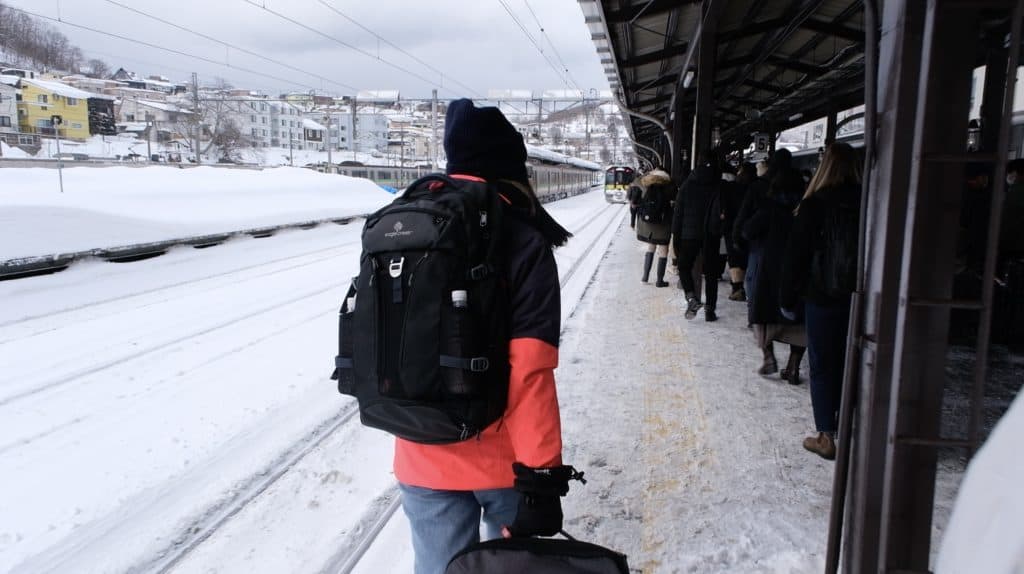
Usually, you’ll only have to wait 20 minutes or so for a connecting train at Otaru Station for your trip from Sapporo to Niseko, but if your incoming train arrives too late to catch its connection then you’ll be waiting a lot longer. This is Japan and these things don’t frequently happen, but not even Japan is immune to delayed trains because of the weather.
TOP TIP: This is the LAST place your Suica card will work. That means if you’ve tapped in at Sapporo station, which I imagine you have, you’ll need to tap out here, buy a ticket to your final destination (likely Kutchan, and come back through the barriers.
If you forget, you can correct things in Kutchan, but it isn’t ideal. If you’re short on time then I wouldn’t bother tapping out at Otaru, but if you do have time, then definitely do.
Otaru – Sapporo
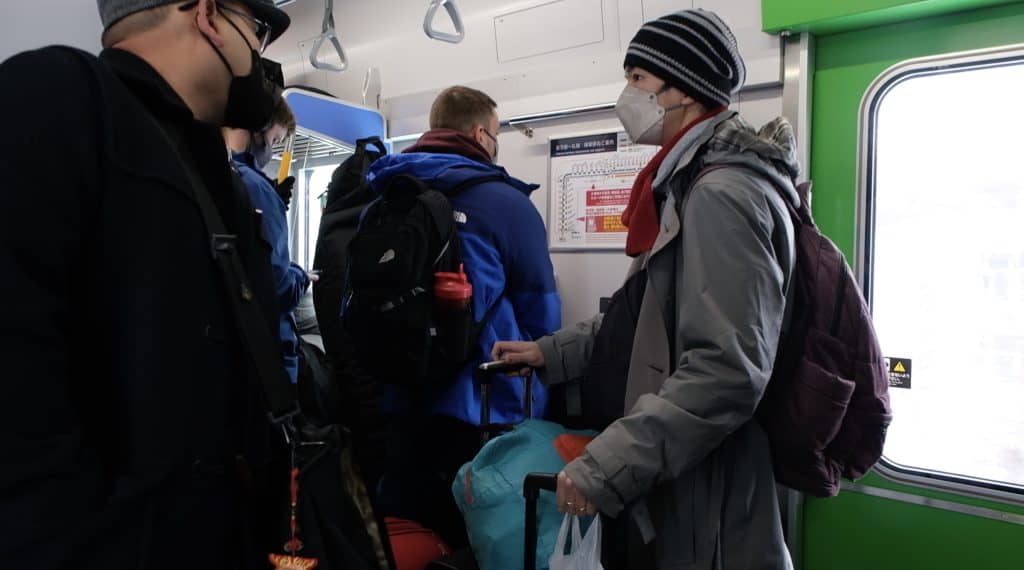
This train was busy as well which meant we ended up having to stand for the majority of the journey. Luckily a few seats became available later on and as we’d sent our skis over via Ta-Q-bin, we quickly grabbed them!
It’s worth mentioning that this train was literally just a single carriage. I’m not sure if it’s always like this, but when the train arrived, people seemed to rush onto it a little faster than the other one (perhaps because they were worried they weren’t going to be able to fit on).

The train journey from Otaru to Niseko (Otaru to Kutchan for us) was again about an hour long and, in my opinion, was the better of the two. While it was smaller than the first, the route the train takes weaves in and out of forests and truly seems like you’re in the middle of nowhere.
It’s scenes like these that make Japan beautiful and ones that I’ll remember for a long time. Of course, I’m sure I’d have seen some cool things on the coach journey if we’d chosen that instead, perhaps more of people actually living, but this way seemed a lot more ‘off the beaten track’ which is a more my style.
I’ve recently been reading Alan Booth’s ‘The Road to Sata’ (one of these books set in Japan) and it’s been one of my main influences to get out there and explore everything this country has to offer. It specifically mentions this part of Japan which was just another reason why I was so determined to take this route instead, and why I urge you too as well!)
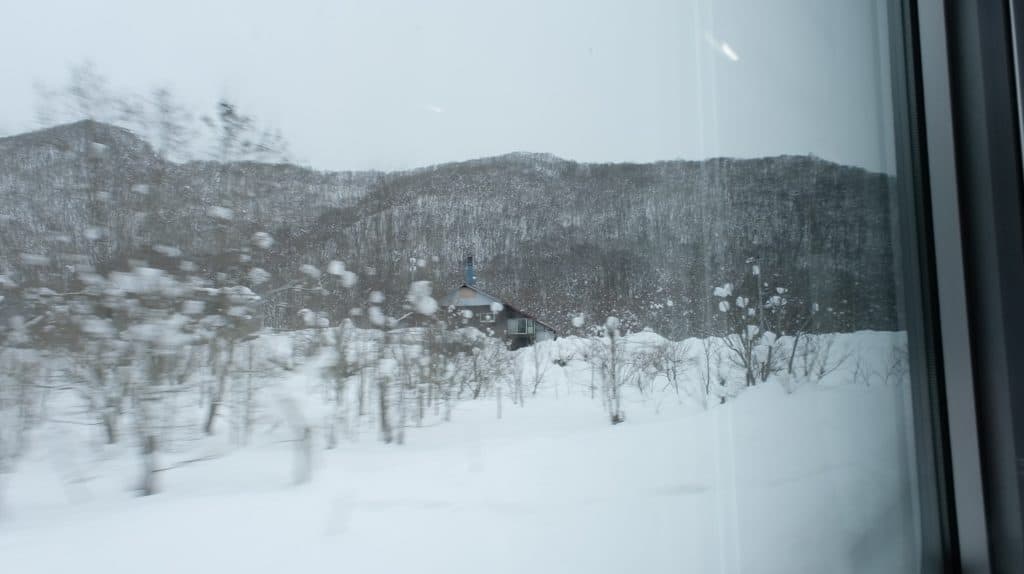
Kutchan Station
We got off at Kutchan station because it’s the main hub for getting into Niseko, but you could have continued on to Niseko station if you’d decided to.

The station itself was very small, and we had about an hour to wait for our bus. Luckily there was a waiting room where we could keep ourselves warm and dry until the bus turned up.
There was quite a big queue to actually get into the station from the platform, and I’d put that down to people having to sort out their Suica/IC card issues because as I said before, they don’t work in this part of the country.
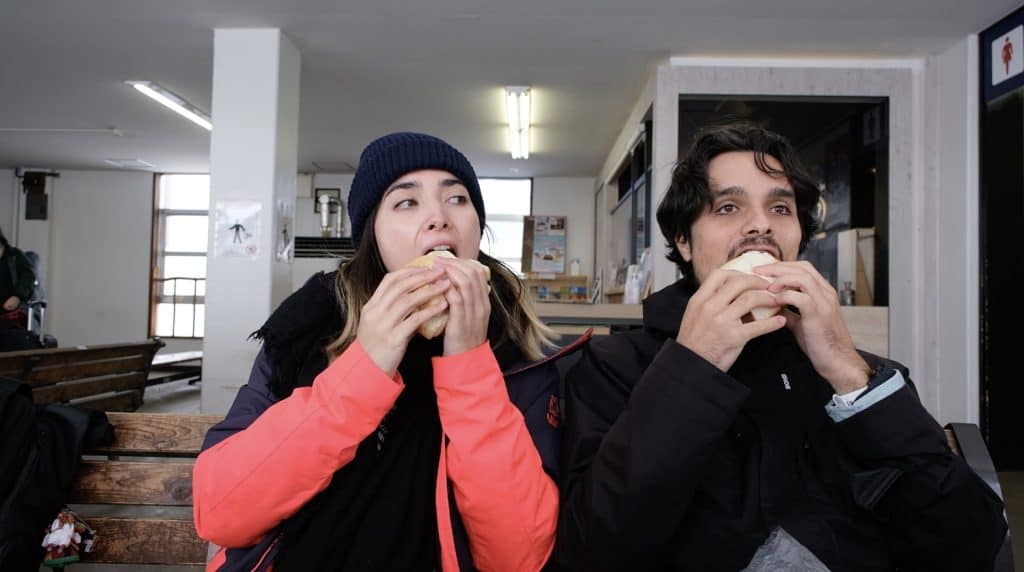
As you can just about see behind us in the photo above, there’s a decent-sized area full of information about the area, and an English-speaking guide who’s there to help you get to the area you need to.
If you’re trying to get to somewhere in Niseko, that’s a little more off the beaten track, or you simply aren’t sure how to get to your hotel, this is completely invaluable!
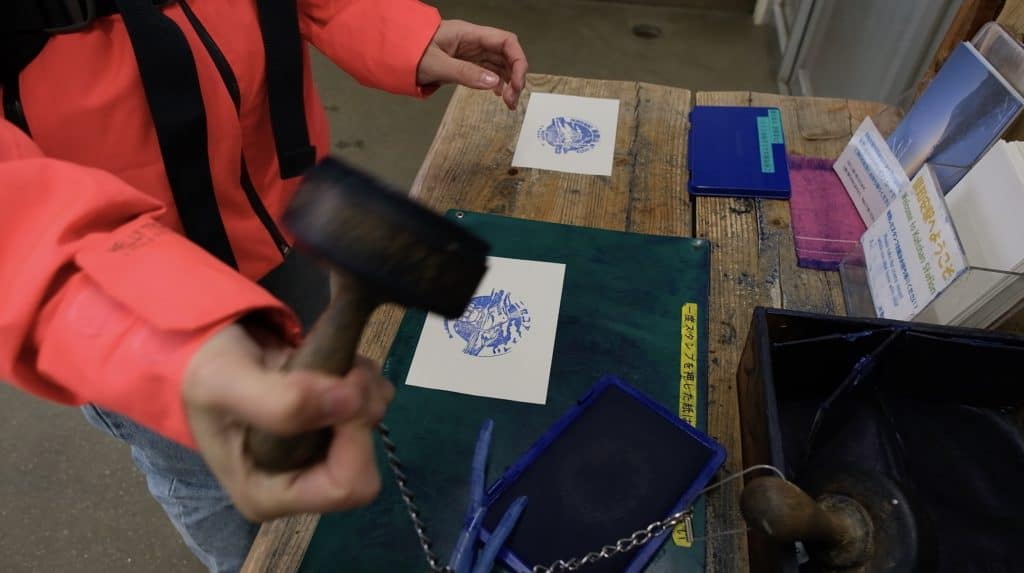
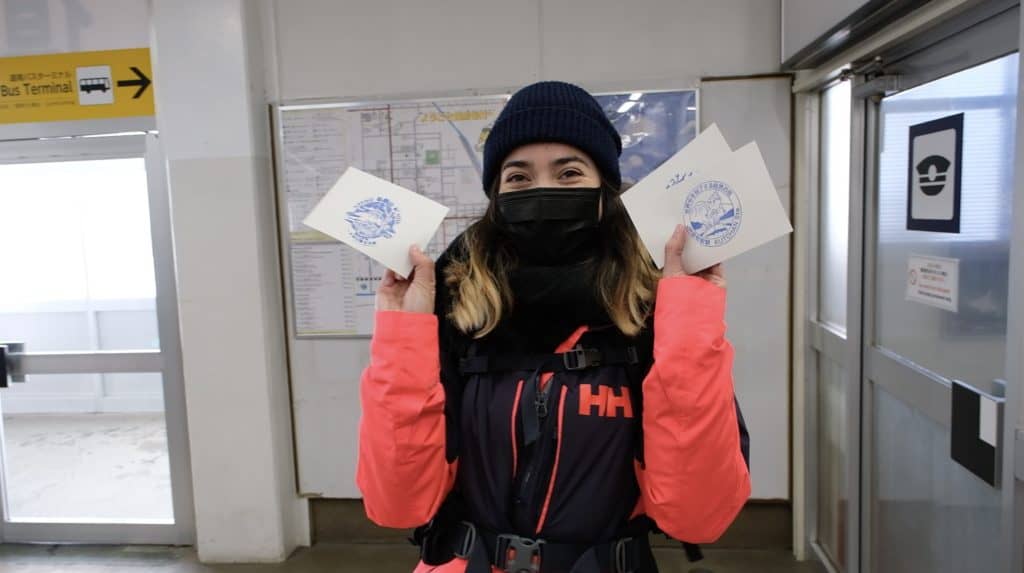
Also, in case you weren’t aware, the vast majority of Japanese train stations have stamps, and a little bit like Pokemon, you’ve gotta catch them all! Kutchan has two, one for Kutchan station and another for Niseko.
They make for awesome keepsakes from your trip, Nadia was very happy with hers as you can see!
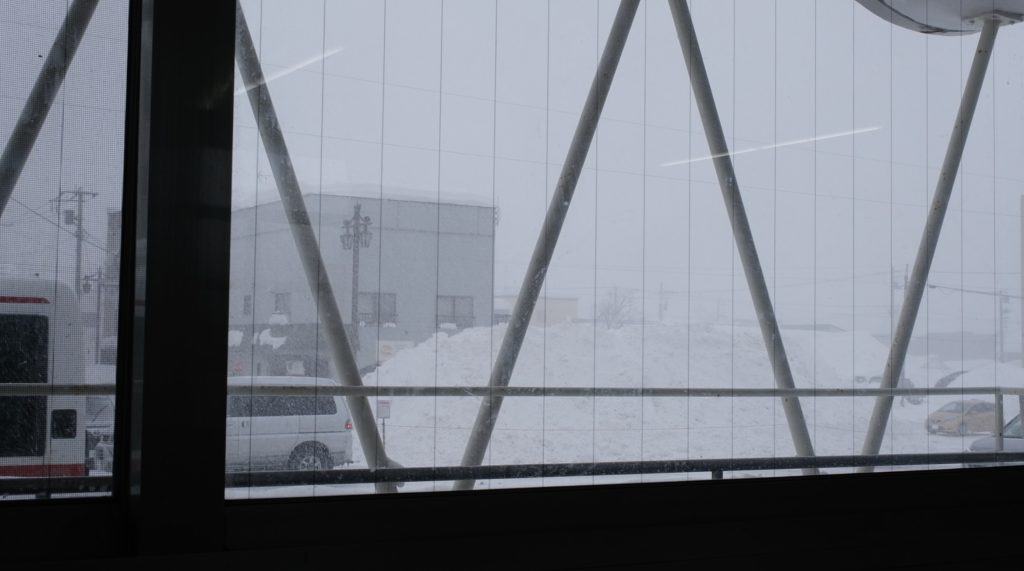

If you’re getting a public bus, it’s highly likely that this is the bus stop you’ll be directed to. It’s just outside the station to the left-hand side and has a bunch of information on it about times. I could insert a picture here but it’s very probable that the times will update each season.
If you’re doing this journey during the ski season (which I assume you are), it’s also worth double-checking the timings with the guide inside as well as the bus stop, and then just waiting in the waiting room until a couple of minutes before your bus.
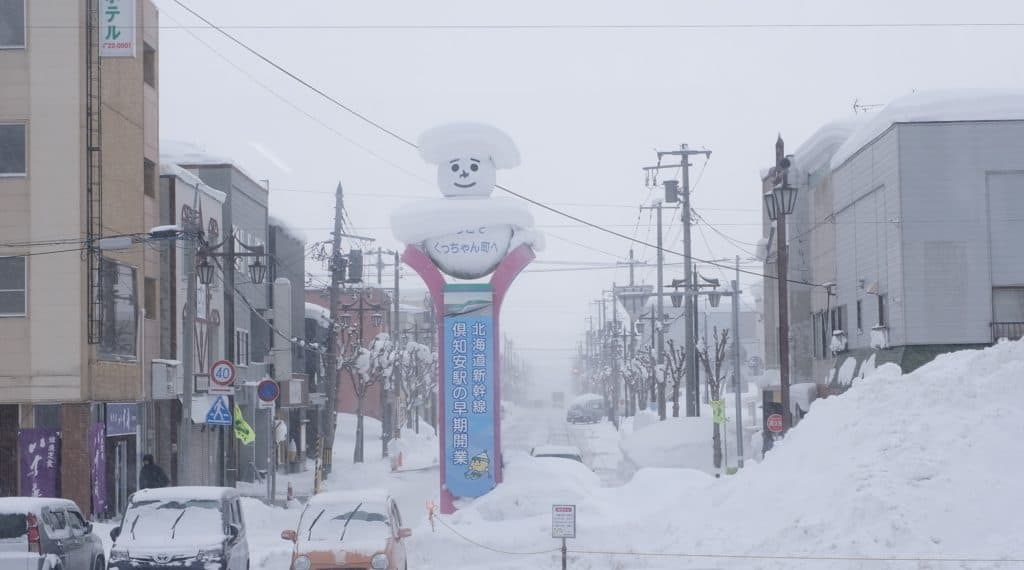
Hokkaido is bitterly cold at this time of the year, and waiting outside is not going to be fun. I’ve been skiing for most of my life, and the temperature and weather here were still a massive shock to my system.
The Bus
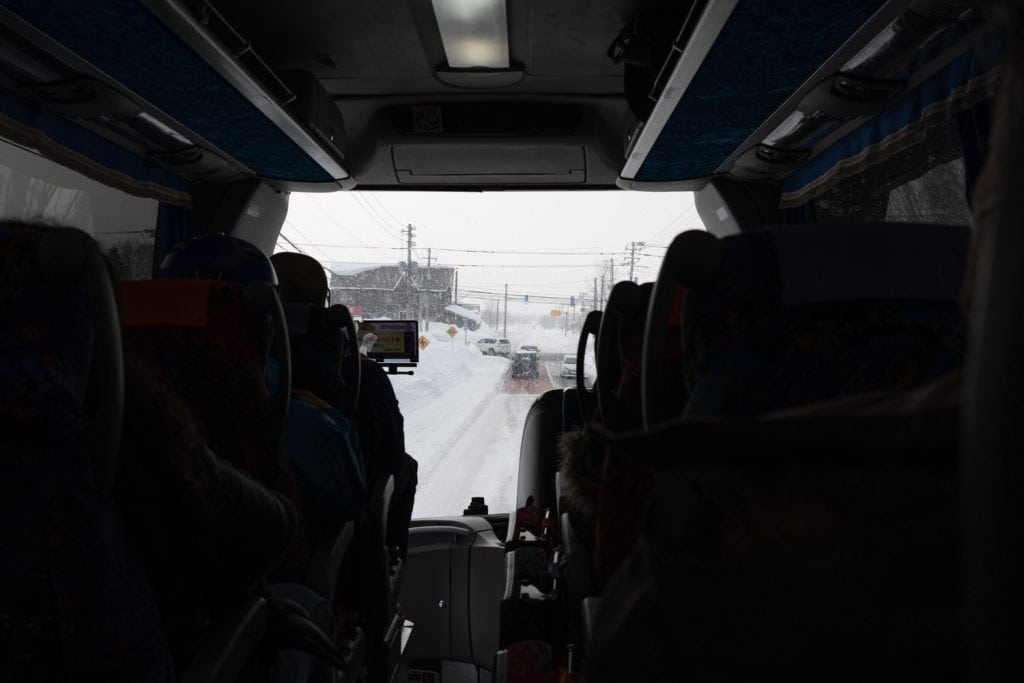
Our bus took us to The Green Leaf Niseko Village Hotel which was about 30 minutes away. It also served a number of other hotels in Niseko village and passed through most of Niseko (took about 20 minutes to get to Grand Hirafu) to pick up guests on the way.
While we were waiting at Kutchan we saw pretty much everyone else get on public buses before we did which means you shouldn’t have too long to wait. Just make sure you don’t arrive too late or else you’ll have to get a taxi which will end up costing you around $30 depending on which part of Niseko you want to get to.
If you aren’t on any kind of strict budget then getting a taxi from Kutchan Station to Niseko might well be your best bet, but for us, it was too much. Plus, we got to see more on the bus than we originally would have.
If you’re planning a ski trip to Niseko, there are a few things to know about skiing in Japan that may come in handy. And yes, there’s a very high chance that this will be the best ski holiday you’ve ever been on! …or maybe I’m just easily pleased, who knows!





